Dark days engulfed Cambodia with fear and despair between 1975 and 1979. The Khmer Rouge’s brutal rule banned all forms of art, culture and music. Dancing was illegal, and so was following any religion, the national education system was shutdown, yet they still managed to preserve their Khmer identity. Several performers and artists were murdered or disappeared abroad, however, a small troop of dancers survived and now they are bringing back, “Apsara” alive.
Traditionally, apsara means celestial maiden and relate to very beautiful women with supernatural powers. In present day, the apsara dance has become an essential part of the Cambodian culture and are performed by both men and women. Its roots lie in Hindu and Buddhist mythology. Under the reign of King Jayavarman VII, Cambodia had more than three thousand Apsara dancers, they only performed for the eyes of the royal family and was taught only at the royal court.
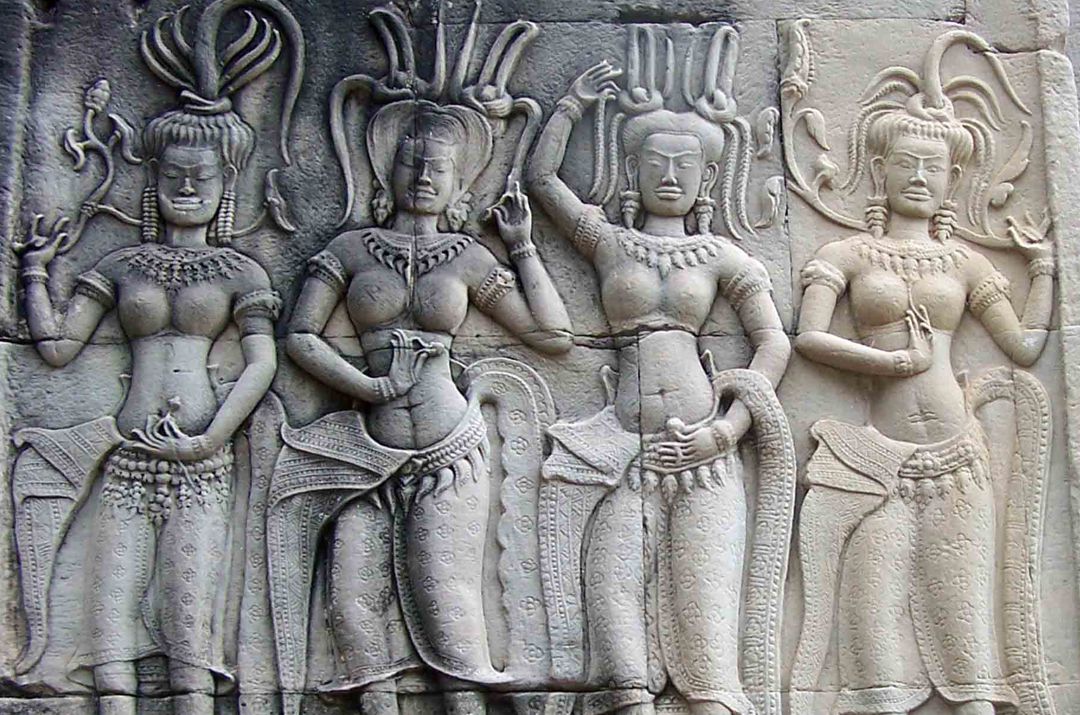
Apsara dance dates back to the 7th century according to some of the carvings found at Angkor temples’ walls.
During my recent trip to Siem Reap, I visited the Koulen Restaurant to watch an Apsara dance performance. I booked the activity through Siem Reap Shuttle which provided a one-way tuk-tuk transfer to Koulen restaurant from my Siem Reap accommodation and costed $12. Koulen is also the largest restaurant in Siem Reap and served a gigantic dinner buffet starting from 1830 hrs, food was an added treat for the entire package. Upon my arrival, a restaurant supervisor directed me to my reserved table which was at the back of the audience. However, the best seats were at the front and were sold at a much higher price through travel agents to the Western and Japanese tourists.
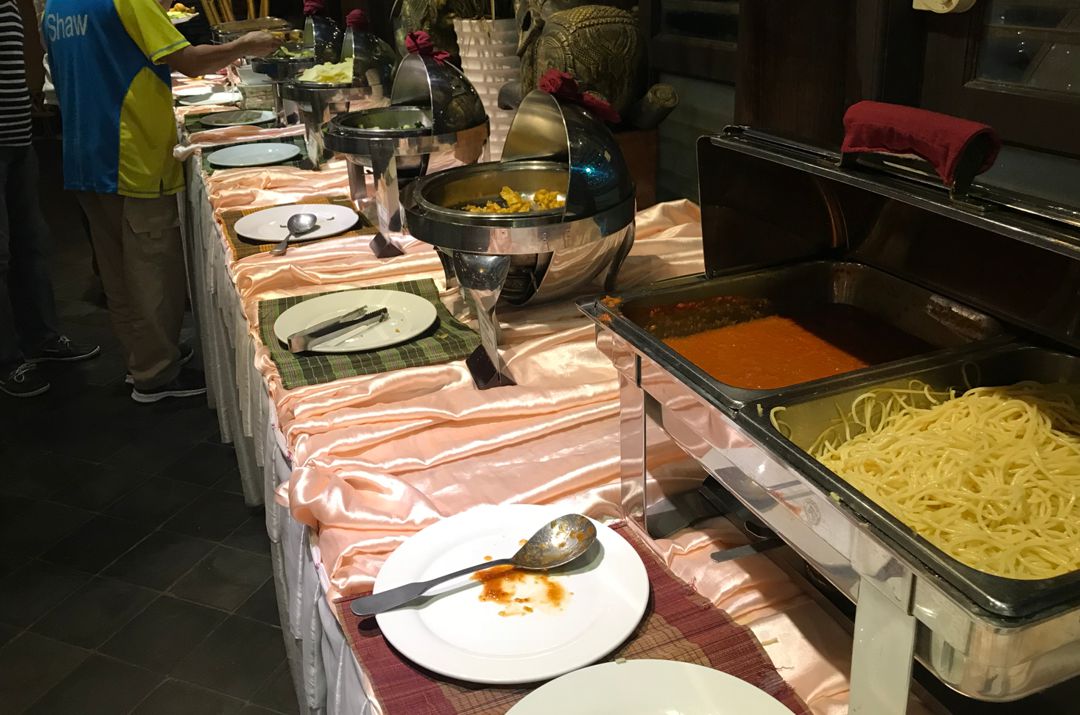
There was nothing special about the food at the dinner buffet
There were six sets of dance performances lined up for the evening and it was scheduled to start at 1930 hrs, I hurried to the buffet tables and tried to appreciate the cuisine as much as I could, it consisted a lot of Asian food dishes, fruit and deserts and it was on “all you can eat” basis. I had about half an hour to indulge on the food. Finally, at sharp 1930 hrs, the first performance began on the stage.
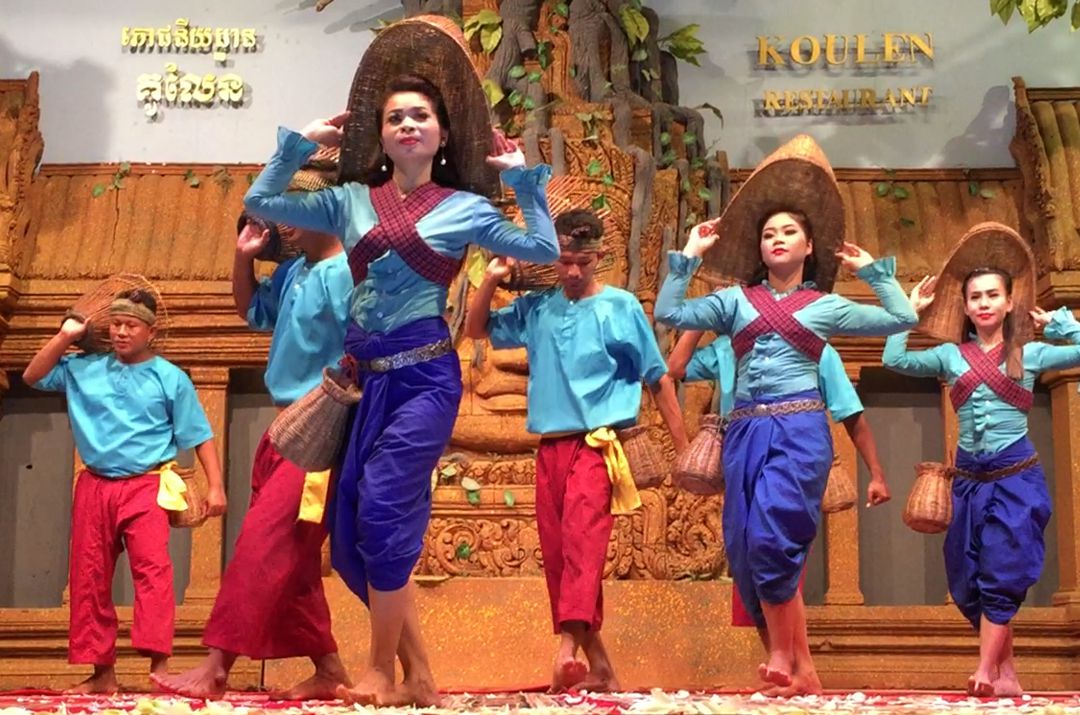
The popular fish dance
The performers made their entrance on barefoot, their costumes were spot-on! They wore handmade silk dresses, they were very impressive and looked expensive with all the accessories and adornments. It is said that their style has not changed for several centuries. Their movements and gesture were feather light and subtle, it had its own symbolism and the sequence supported the narrative. The Apsara dance narrated stories from everyday life and nature. Hereby, the hand gestures play an important role.
Three of the performances consisted native dances, one of them was the “fishing dance” and the other was the “bamboo pole dance”. The entire dance performance was in contrast with one another. A surreal Apsara dance while a lively native or folk dance complemented the entire performance.
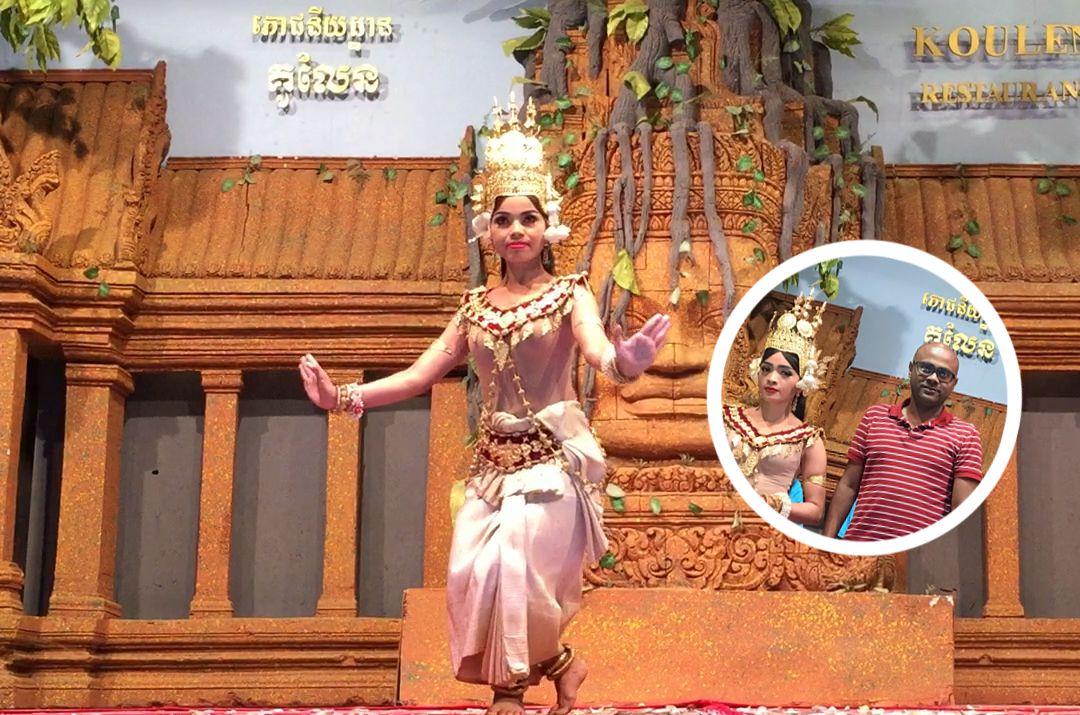
Soon after the final dance finished everyone wanted a photo-shoot with the performers.
All six performances lasted about an hour. The experience was indeed memorable and no visit to Siem Reap will ever be complete without having seen the Apsara dance.

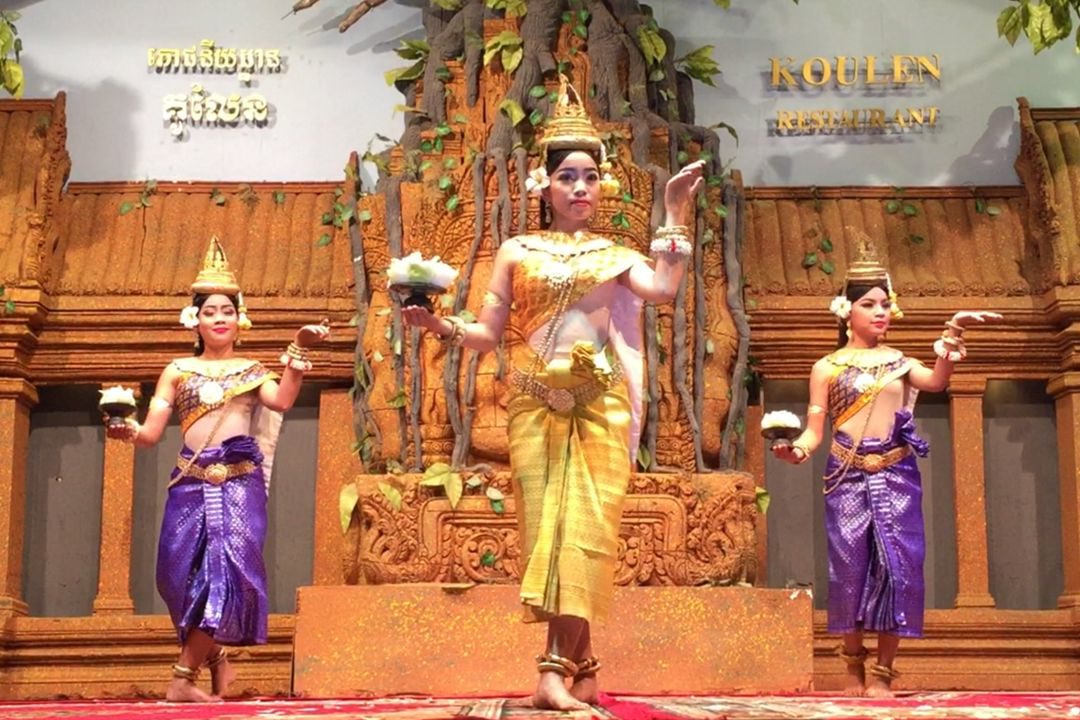


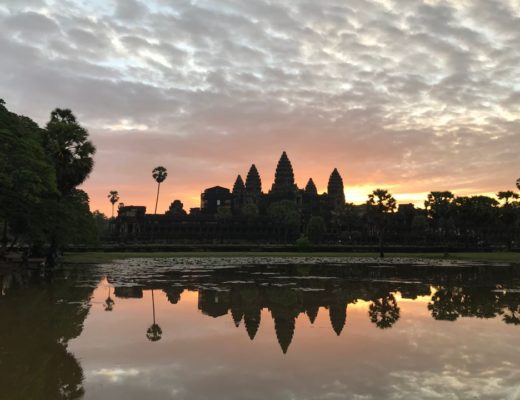
1 Comment
[…] the hostel to pick me and Katie to drop us for dinner at the Koulen Restaurant which also featured Apsara dance […]